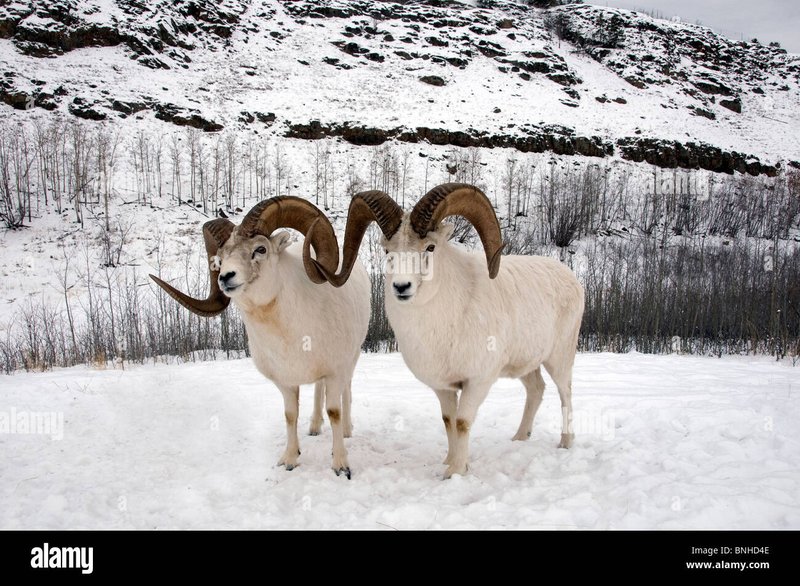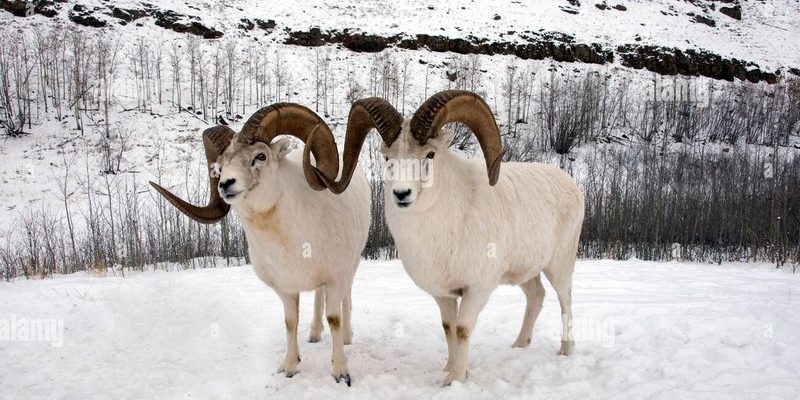
Dall sheep are more than just a pretty face; they’re an essential part of their ecosystem. Understanding their behavior and knowing how to interact (or not interact) with them can make all the difference in preserving their natural habitat and keeping both you and the sheep safe. Here’s the thing: respecting wildlife is crucial, so let’s dive into what you need to know when you encounter a Dall sheep.
Understanding Dall Sheep Behavior
Before you head into their territory, it’s good to understand a bit about Dall sheep. These animals are known for their agility and ability to thrive in steep, rocky environments. They have a natural instinct to be wary of humans, so if you come across one, it’s essential to read its body language.
Dall sheep typically graze in groups, and you’ll often spot them on rocky outcrops. They’re highly social animals, so if you see one, there are probably more nearby. If they sense danger (like a curious human), they might stamp their feet or snort as a warning. It’s their way of saying, “Hey, I see you!” Like a warning shot at a party, it’s your cue to maintain a safe distance.
Understanding how they interact with each other is also important. When they play-fight or butt heads, it’s usually just playful behavior, especially among younger males. So if you see some sheep engaging in a little sparring match, don’t worry; it’s all in good fun!
Keeping a Safe Distance
One of the most critical rules of wildlife viewing is to maintain a safe distance. Dall sheep should be observed from at least 200 yards away. Getting too close can stress them out and disrupt their natural behaviors. Remember, these are wild animals, not pets!
If you’re hiking and spot some sheep, stop, observe, and enjoy the moment—all while keeping your distance. Using binoculars or a zoom lens camera is a great way to appreciate their beauty without encroaching on their space. It’s like bringing a telescope to a concert; you get a better view without being intrusive.
Honesty, if you find yourself getting closer than intended, back off slowly. Sudden movements can startle them, which might cause them to flee. Keeping your body language calm and relaxed can help reassure them that you mean no harm.
What to Avoid During An Encounter
You might be wondering what actions are best left in the daydream phase during a Dall sheep encounter. Here’s a quick rundown:
- No Feeding: Feeding wildlife can lead to dependency on human food and disrupt their natural foraging behaviors.
- No Flash Photography: Bright flashes can frighten them. Stick to natural lighting for photos.
- No Getting Between Mothers and Lambs: If you see a mother sheep and her young, be cautious. Mothers can be very protective!
- No Chase: Never try to chase or approach them. This can stress them out significantly.
Remember, these guidelines aren’t just for fun—they’re crucial for the safety of both you and the animals. It’s essential to respect their space to ensure a peaceful coexistence.
How to Enjoy the Experience Respectfully
So, you’ve spotted some Dall sheep from a safe distance—what now? You can enjoy the moment by observing their behavior, taking mental notes, and appreciating the stunning scenery. This is your chance to connect with nature and truly appreciate the wild.
Consider bringing along a field guide. It can help you identify different behaviors or even other wildlife in the area. It’s like having a roadmap in a new city; the more you know, the more enjoyable the journey becomes.
Jot down your observations in a journal later. You might start to notice patterns, like how they graze or interact with their environment. Sharing your stories or photos with others can also spread awareness about these incredible animals and their habitat.
What to Do If You Feel Threatened
While Dall sheep are typically peaceful, there could be rare situations where they feel threatened. If you ever feel uncomfortable, the best course of action is to remain calm and slowly back away. Do not run; that might provoke a chase instinct!
In the unlikely event that a sheep charges, it’s usually more of a bluff than an attack. But, here’s the thing: keep your distance and ensure there’s a clear path for escape—not just for you but for the sheep, too.
If your instincts tell you a sheep is cornered or feels trapped, give it plenty of room to move. Often, they’ll just want to find their way back to safety, much like you would in a crowded room.
Educating Others About Dall Sheep
Having experiences with Dall sheep can seem like a special secret, but sharing your knowledge can help protect them. The more people understand how to behave around wildlife, the better we can ensure these animals have safe habitats.
Consider leading by example. If you’re with friends or family, share what you know about Dall sheep and proper wildlife etiquette. It’s like being the wise sage among your friends, showing them the ropes in the great outdoors.
Social media can also be a platform for education. Share your stories, photos, and experiences, but always emphasize the importance of respect and safety. Remember, spreading awareness can lead to better protection for these remarkable creatures.
Encountering Dall sheep in the wild can be a magical experience. It’s a reminder of the beauty and complexity of nature. By understanding how to behave around them, you not only ensure your safety but also contribute to the well-being of these incredible animals.
So, the next time you find yourself hiking in their neck of the woods, remember these guidelines. Enjoy the moment, respect their space, and take the opportunity to connect with the wildlife that shares our planet. After all, nature is best appreciated with a little bit of thoughtfulness and respect. Happy exploring!

